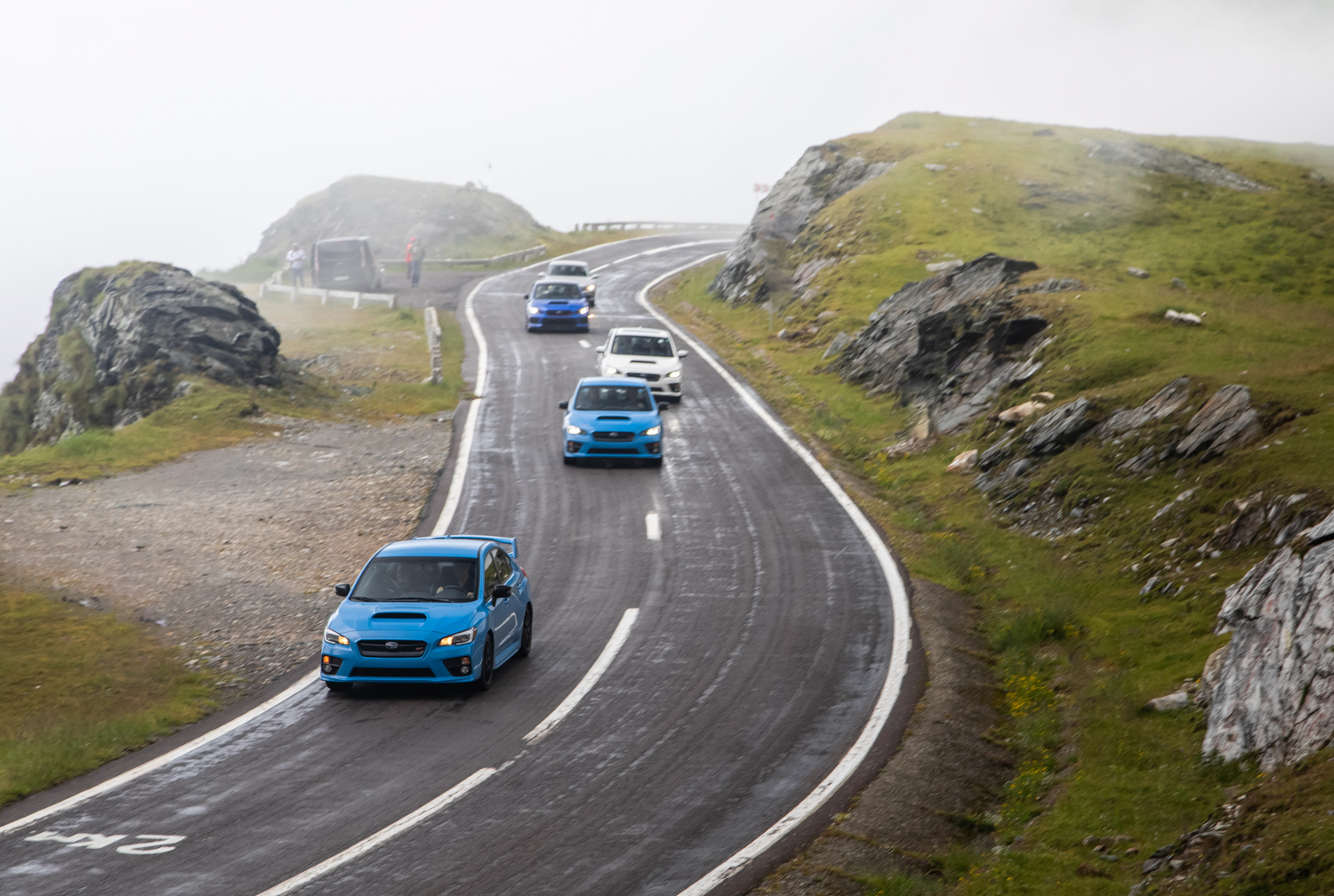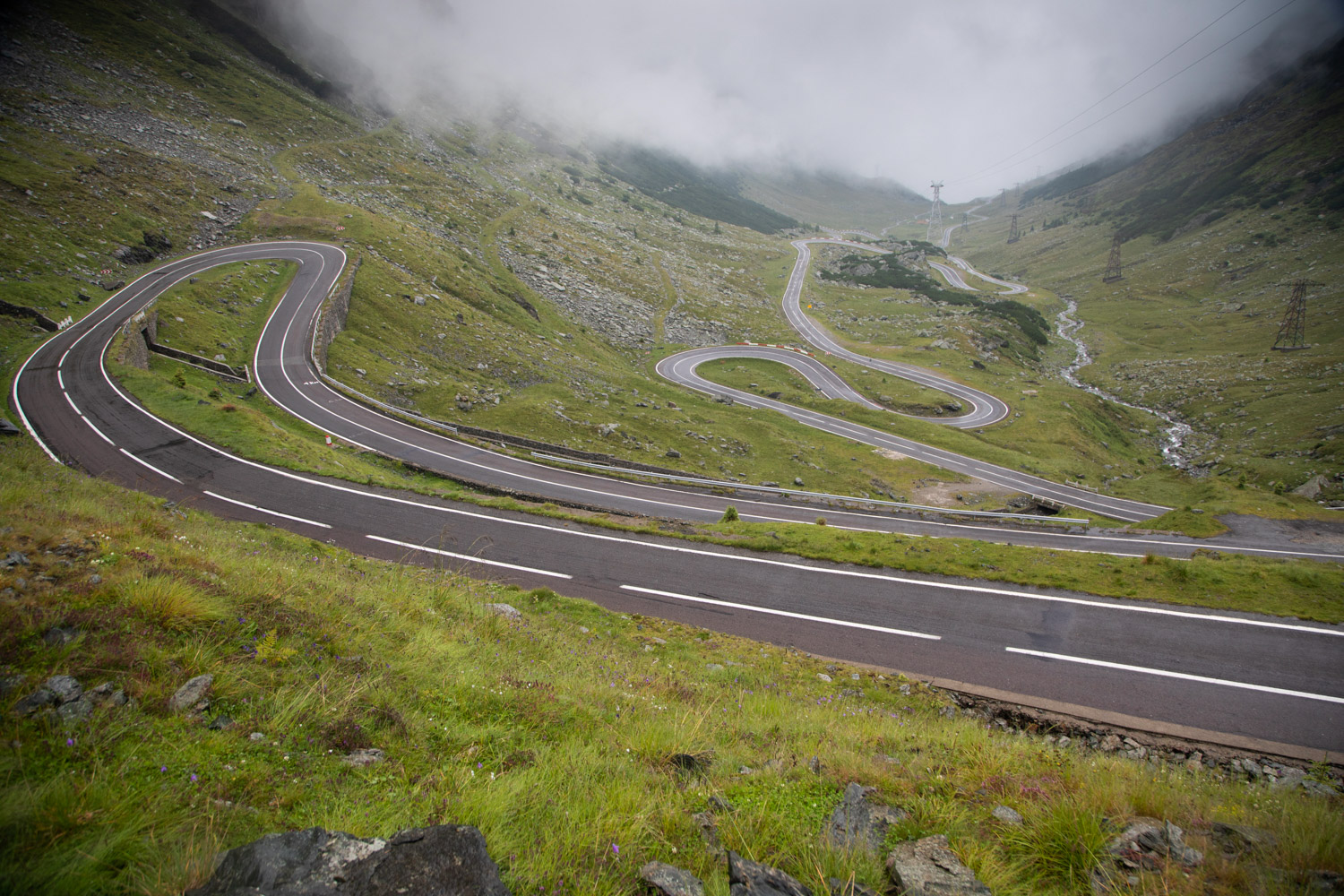Is Romania’s Transfagarasan Highway the best road on earth?
Romania’s Transfagarasan Highway is nothing if not infamous. Built under the orders of communist dictator Nicolae Ceaușescu during a fit of megalomania in the early 1970s, the reported intention was to provide the Romanian military ready access to a strategic northern passage in the event that the Soviets (who occupied Romania from 1944-1958 and had just invaded Czechoslovakia in 1968) decided to march back in.
A faster route around some of the country’s highest mountains already existed, and the 56 miles of the Transfagarasan would only be readily accessible for a few months out of the year. They would be impressive miles, though; a signal of strength showing the world what a Ceaușescu-led Romania was capable of, which appears to be the true motivation behind its construction.
“Ceaușescu’s folly”

“Impressive” came at a cost, however: soldiers were conscripted to build the highway, blasting some 3.8 million cubic meters of earth off the treacherous mountain range. The work was both long and dangerous: while partially opened in 1974, the highway would not be fully completed until 1980. And though the closest thing to an official count would claim that 38 of those soldiers had died during construction, the common assumption today is that at least 100, if not several hundreds, perished doing the dangerous work. The costs, both human and otherwise, earned the Transfagarasan a nickname that lives on to this day—“Ceaușescu’s folly.”
Connecting the famous/infamous provinces of Wallachia and Transylvania, the Transfaragarsan exists today both as a scar on Romania’s landscape from a dark era of the country’s history as well as a tourist trap for visitors looking to experience what some say is the best driving road in the world. The locals are super friendly. They’re chatty too, with some recounting to us the famous visit by the Top Gear crew. Little pop-up villages dot the highway, with amenities ranging from larger resorts and restaurants to, let’s say, rustic establishments. But those are rare; thanks to the terrain, once you’re on the highway there aren’t many turnouts.
Your “in the know” friend—the one who studied abroad for a semester and came back saying “Barthelona”—will chuckle at you for mentioning the Transfagarasan, insisting that Romania’s Transalpina road is soooo much better. In fact, there is a solid case to be made against the Transfagarasan: it’s only fully open from June to October—sometimes into November if the weather allows—and during those months is crowded with fellow enthusiast drivers, bicyclists, hikers, and shepherds. Another knock is that unlike the Transalpina, which has been repaved relatively recently, the Transfagarasan has received minimal upkeep.
A rally stage of our own

We’re not on a regular trip to drive the Transfagarasan, either. We arrived just after it had opened for the season, which many recommend as the best time to get there, and the highway is closed just for us. Think full-on, no-joke closure with corner workers, rescue, and fire personnel. There is a helicopter. As for those rough roads, well, we’re not here in any delicate supercar; we’re taking on the Transfagarasan in Subaru’s WRX STI and the new STI Type RA—rally cars for the road.
Subaru closed 52.4 miles of the Transfagarasan in an effort to have Isle of Man veteran Mark Higgins set a record time through the (admittedly arbitrary) stretch of the highway. We’re not sure who else is going to get a car together, close the highway, and attempt to beat his record, but Higgins was in the WRX STI Type RA time attack car that set the fastest automobile lap time on the Isle of Man TT course in 2016 and the fastest four-door lap of the Nurburgring in 2017. Higgins’ car is the inspiration for the new STI Type RA road car—so perhaps the Transfagarasan was just the next target.
In any case, the 600-horsepower time attack STI was prepared for the unique challenges of the Transfagarasan, with a long-range fuel tank, barometric sensor to help compensate for the changing altitudes, and an adjustment to the first gear ratio to better handle the significant number of slower hairpin turns.
Taking on the Transfagarasan

While Higgins takes breaks between his long time attack runs, Subaru lets us loose on the empty highway. We start at 1607 feet of elevation, surrounded by huge pine trees, and 624 dreamy corners later end up at just under 7000 feet with nary a tree in sight. The experience of that transition is surreal.
It’s also raining the whole time we’re barreling down the busted highway, but there are rare periods of sunshine. What we find on the Transfagarasan is that the rain is less of an issue for the sure-footed STI than the maddening fog, especially troublesome at the higher altitudes. Even as Subaru attempts to plan out each of Higgins’ runs, the mountains “breathe” so often that it could be perfectly clear when the car sets off, but heavily fogged over by the time it gets to the dicey hairpins that carve up the steep slope. There are times when speed is limited to just 10 mph—for everyone.
Despite the weather difficulties, it’s obvious that the Transfagarasan is a hell of a driving road. It definitely has its riskier spots: long stretches with little to no room for error—if you go off, you’re done for. Concrete underpasses hold the mountain back and keep rockslides from closing the road daily, but they’re also right there on either side of the road. It’s the kind of thing that you may not necessarily notice in regular, slower-moving traffic but very suddenly matters when you’re pushing the car at speed.
The lack of any recent paving shows in some very rough patches, but even with smooth pavement there are some runs that seriously compress the car’s suspension. You find yourself constantly reminding yourself not to die. That’s all part of the challenge and the joy of the Transfagarasan, though. It’s like a racetrack that doesn’t loop over on itself. It just keeps going, hairpin after hairpin. It’s driver heaven, especially when you’re climbing the final stretch to the top of the mountains.

What made our run over the Transfagarasan so special compared to what you’ll see from every YouTuber with an M3 and a GoPro is that the road was closed. No sheep, no pedestrians, no trucks, no insane Yugo drivers coming the other way. Not that we had time to see the sights—we were moving, fast enough to warp the big brakes on most of the cars. Speaking of, the STI is pretty close to the perfect car to run 10/10ths on this highway—you need something that can take the beating that the intense potholes and slick pavement all while maintaining its composure. Both the WRX STI and Type RA handled the task with aplomb.
So, is the Transfagarasan the “Best Driving Road in the World?” It’s in the conversation for sure, but in the conditions we saw, “Ceaușescu’s folly” makes maybe an even more compelling case. The only way you’ll know for sure is if you’re crazy enough to make the trip yourself.


